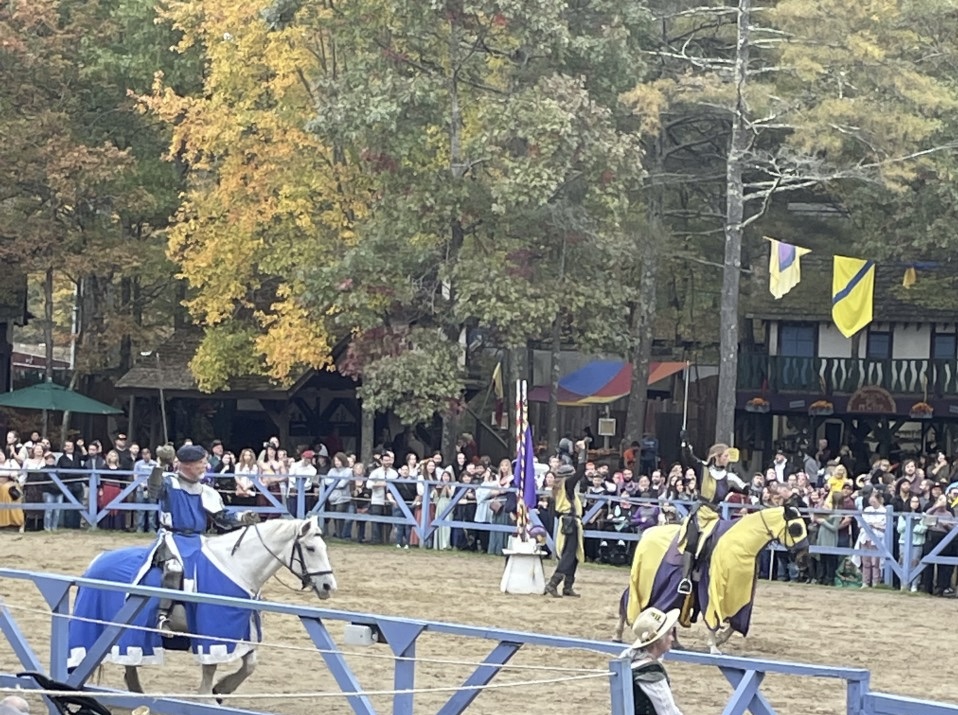King Richard’s Faire: An Example of Contemporary Medievalism
By Emily Baldo
Renaissance fairs are relatively common events, typically geared towards families looking to experience “medieval times,” and pretend to go back in time for a few hours. With costumes, food, performances, and activities themed after the medieval era, the fairs are as close as we can get in the twenty-first century to actually experiencing medieval life, and are a way to step out of our modern lives and into an (often romanticized) era of history. King Richard’s Faire is one such experience, and boasts a variety of activities and events for guests, and is what would be referred to as contemporary medievalism: our ideas and interpretation of the medieval period.
King Richard’s Faire was my first ever Faire, and did not disappoint- particularly with the jousting event. When someone says “medieval,” things like jousting and court jesters come to mind, the characteristics of early noble life at court, with their values like honor and courage. The King and Queen were placed in a box, seated close to the arena. The squires and announcers were lively, acting out their roles with both fantastic stage presence and attention to detail- audience members were pulled in from the moment we took our places outside the arena to spectate. Knights galloped in on horses, and jousted with energy and confidence. The sword fighting at the end was well-choreographed and just dramatic enough to feel real.
However, this is not a review of the Faire— so what does any of this have to do with the concept of contemporary medievalism? Consider: these well-rehearsed, niche events that are only open for a few weeks a year bring in hundreds of people- the premises were packed with families and couples on the day of my visit. It might be one’s first instinct to wave off reenactments and medieval-themed performances as a waste of time, or as something no one is interested in, but the audiences at the Faire begs to differ, and I must say that even I was taken aback at the sheer number of people who enjoy regular, annual trips to experiences like King Richard’s- and not just for the jousting. But why do people pay for a ticket and drive all the way to watch some actors on horses with long staffs gallop towards each other over and over again? Watching something so “rustic,” with so much history behind it, but that is so different from sitting in a classroom and taking notes, is a valuable and unique experience. There is a reason why the jousting sidelines were overflowing with people in costume, shouting both cheers and jeers at the performers, fully immersed in the theme and the moment. Society as we are accustomed to it is largely online; especially after the pandemic, human interaction has been limited for far too long, and it is rare that our modern world deems it acceptable so slow down, or to want to be removed from the daily rush of work, commute, errands, and obligations. While the Renaissance Faire can be a fun family outing, its popularity hints at a deeper need for those enriching and social experiences.
So: the next time the workload begins to feel overwhelming, search up “jousting,” or look for your nearest Faire. It may be time to unplug and visit the medieval period, as accurately as you can.






